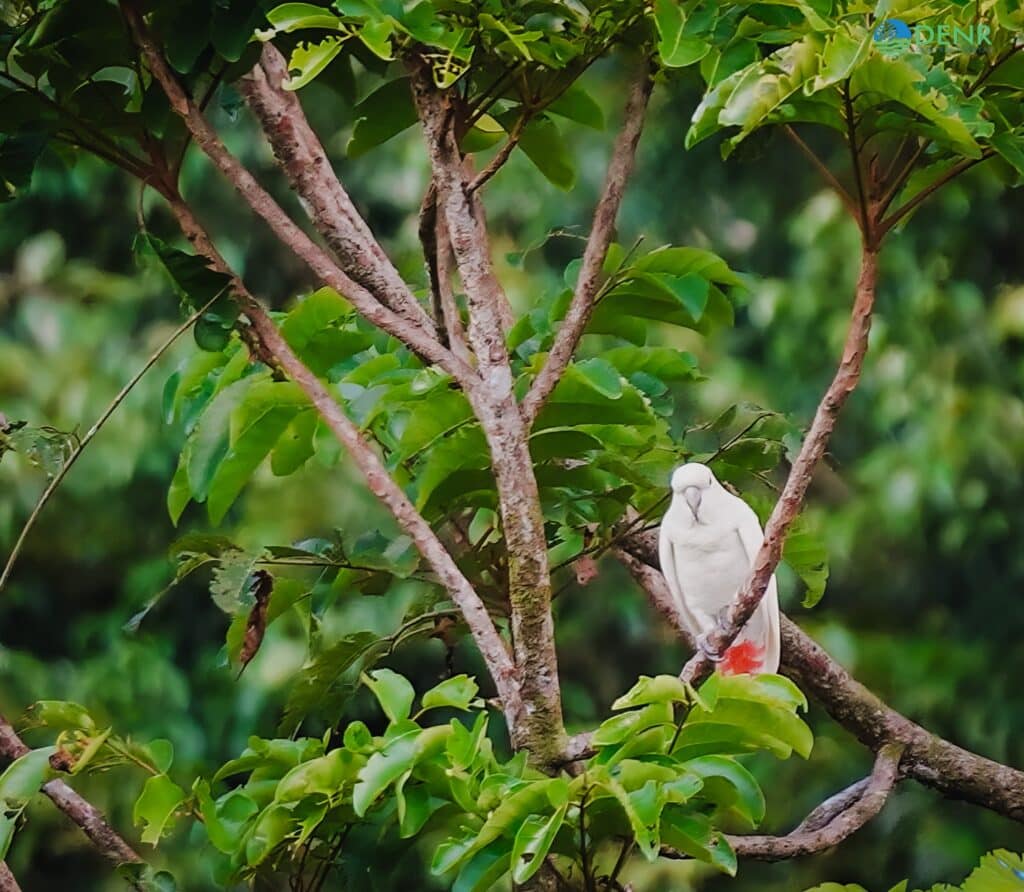
A rare sighting of the abukay or Philippine cockatoo was captured in the Loboc Watershed in Bohol during an exploratory survey by DENR-7 and Bohol’s Provincial Environment and Natural Resources Office. This is also the first sighting of the Philippine cockatoo in the wild in Bohol since 2017. | Photo by Eduardo Fidel via DENR-7
CEBU CITY, Philippines — Environmentalists and researchers in Bohol made a historic sighting of one of the rarest parrots in the world.
The Department of Environment and Natural Resources in Central Visayas (DENR-7) on November 25 shared photos of the Philippine cockatoo spotted within the Loboc Watershed in Loboc town, Bohol.
The images showed two cockatoos perched on separate branches, with their distinct red feathers around the vent visibly seen.
It was the first sighting of the Philippine cockatoo, locally known as abukay, in its natural habitat in Bohol, DENR-7 said. The last sighting was recorded in 2017.
The Philippine cockatoo
The Philippine cockatoo, also known as the red-vented cockatoo, is a species of parrot endemic in the Philippines.
Like most cockatoos, the abukay has an entirely white plumage but what sets it apart from the rest is its red undertail coverts tipped in white, a yellowish undertail, and pale-yellow underwings.
Previously, the bird was a common sighting throughout the archipelago but due to illegal wildlife trade and habitat loss, their population has drastically declined.
The International Union for Conservation of Nature (IUCN) listed the Philippine cockatoo as critically endangered – the same category as the Philippine Eagle – with less than 1,000 mature individuals left in the wild.
READ MORE
‘Baby’ Philippine Eagle: Hatchling stirs hope for critically endangered raptor
Vets fail to save Philippine eagle Mangayon
According to experts, the abukay is considered ‘locally extinct’ in most areas in the Philippines except in Palawan and the Sulu Archipelago where a ‘sizeable population’ still lives.
Small populations of this endemic parrot were also reported in Polillo Islands, Samar and Bohol.
The Philippine cockatoo is protected under the Wildlife Conservation and Protection Act of the Philippines or Republic Act No. 9147.
This means that anyone caught capturing or selling these endangered parrots may face hefty penalties, including several years of imprisonment. /clorenciana